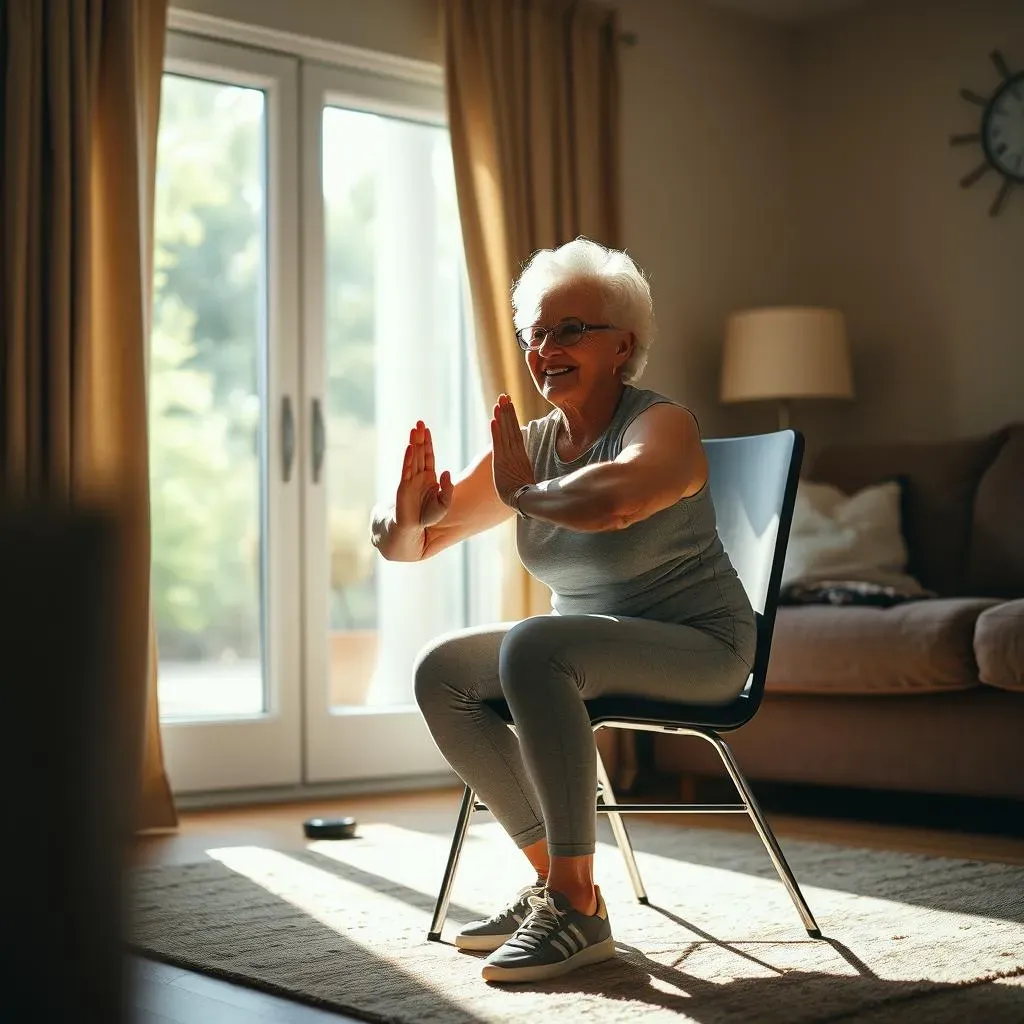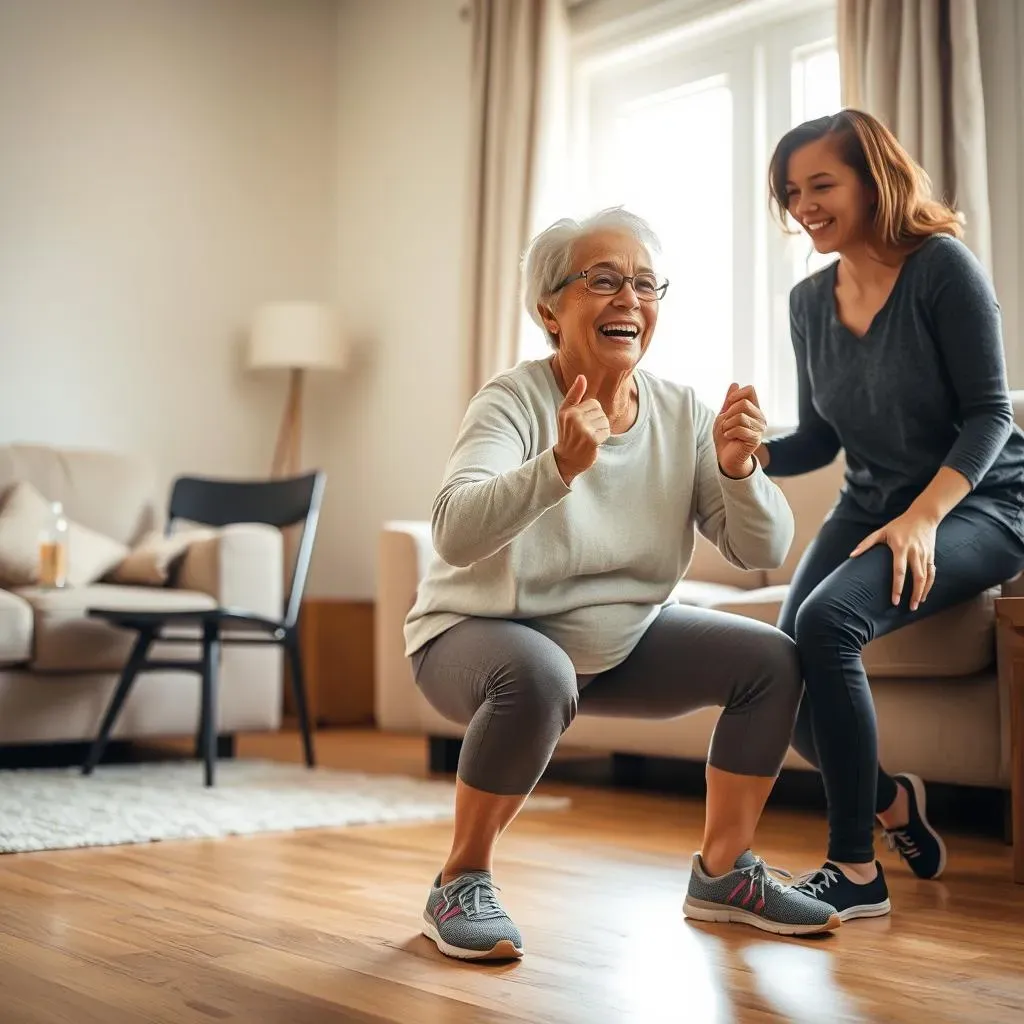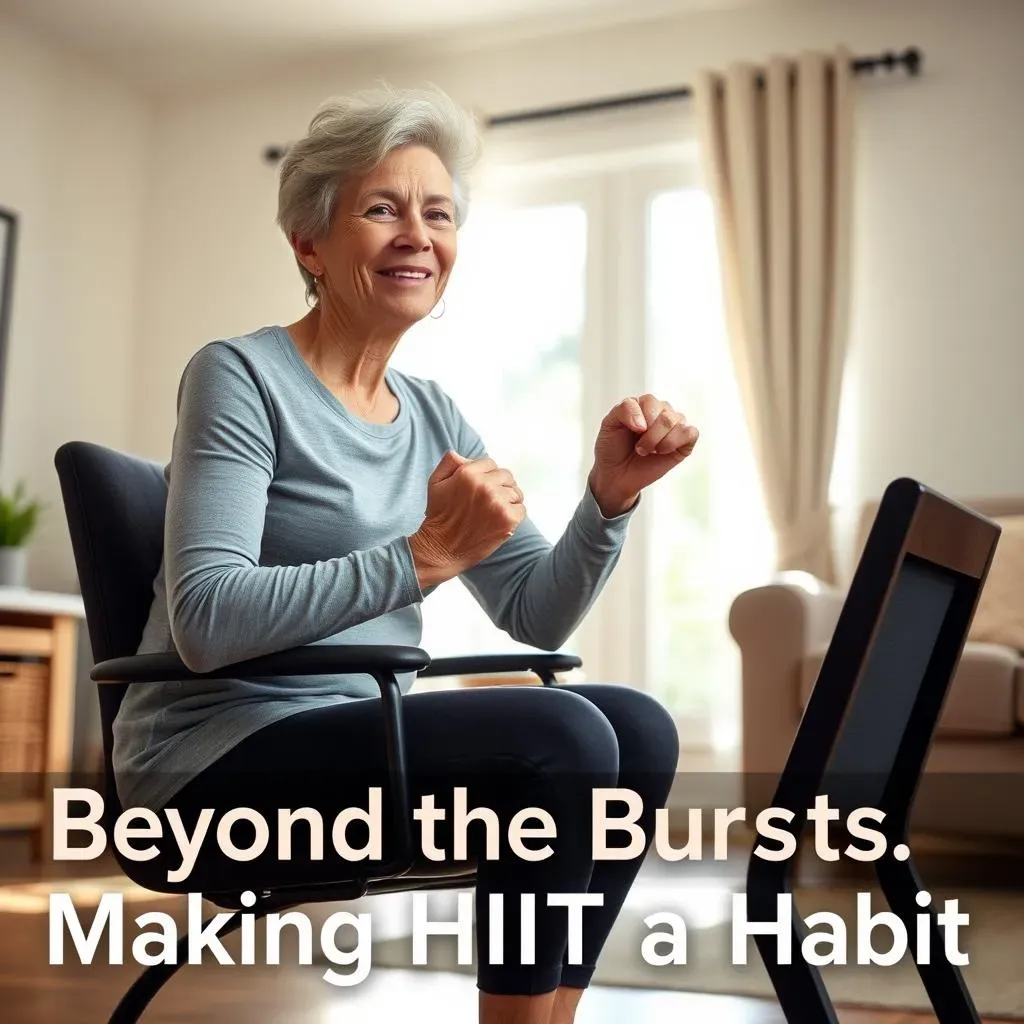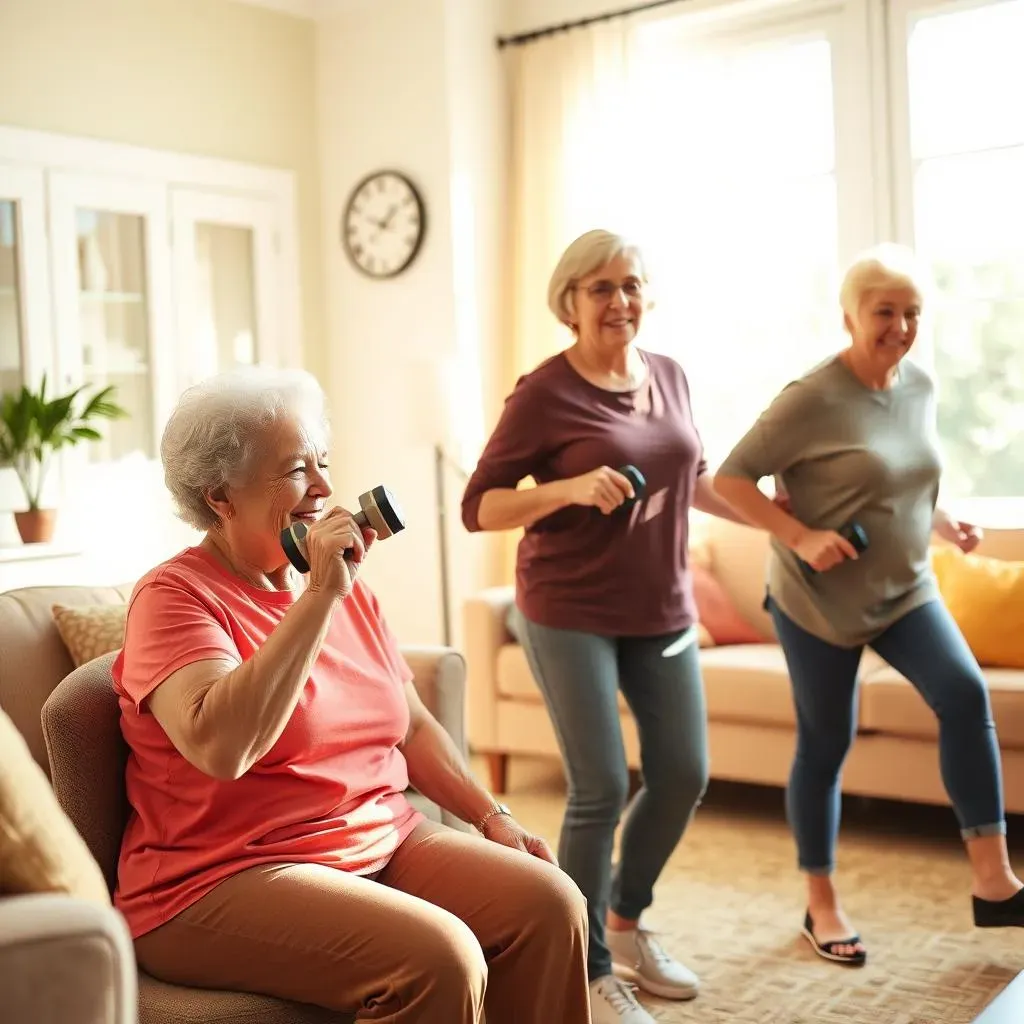Table of Contents
Let's be honest, the phrase "high-intensity interval training" might conjure images of young athletes pushing themselves to the brink. If you're a senior, you might hear "HIIT" and think, "Nope, that's not for me." But what if we told you that effective, safe hiit workouts for seniors at home are not only possible but can significantly boost your fitness, energy, and overall health? It's true. As we age, maintaining strength and cardiovascular health becomes even more critical, not less. Steady-state cardio is fine, but it's a bit like driving in the slow lane forever. Sometimes, you need to punch the gas just a little to keep the engine running smoothly.
Unpacking HIIT: What It Means for Seniors

Unpacking HIIT: What It Means for Seniors
so you're looking into this whole HIIT thing for seniors. Let's break it down without the gym-bro lingo. HIIT, or High-Intensity Interval Training, isn't some magic bullet or extreme sport you see on TV. At its core, it's just smart timing: short bursts of harder effort followed by brief periods of rest or easier movement. Think of it like this: instead of walking at the same pace for 30 minutes, you walk briskly for a minute, then stroll for a minute, and repeat. For seniors, "high intensity" is relative. It means working at a level that feels challenging *for you*, where maybe you can only speak a few words at a time, not a full sentence. It's about pushing your personal edge safely, not competing with anyone else. This approach can be surprisingly effective for folks looking to improve heart health, build strength, and even manage weight, often in less time than traditional cardio.
Why HIIT Workouts for Seniors at Home Make Sense

Why HIIT Workouts for Seniors at Home Make Sense
No Commute, No Crowds
Seriously, who needs the hassle of driving to a gym, finding parking, and navigating crowded equipment? One of the biggest wins for trying hiit workouts for seniors at home is the sheer convenience. Your living room, a bit of clear space, maybe a sturdy chair – that's your gym. You set the schedule. You control the music. You don't have to worry about someone else's sweat on the machine or feeling self-conscious if you're trying a new movement. It strips away a lot of the common barriers people face when trying to stick with an exercise routine. It's just you, the workout, and maybe a friendly pet supervising.
Big Benefits in Less Time
Time is precious, no matter your age. Traditional advice often suggests long, steady cardio sessions. While those have their place, HIIT offers a powerful alternative for boosting cardiovascular health and metabolism efficiently. Those short bursts of higher effort challenge your heart and lungs differently, leading to improvements in things like VO2 max – basically, how well your body uses oxygen. This can translate to more stamina for everyday activities, like carrying groceries or playing with grandkids. Studies consistently show that even relatively short HIIT sessions a few times a week can yield significant health markers improvements for older adults.
Why are hiit workouts for seniors at home so effective? They tap into something called EPOC (Excess Post-exercise Oxygen Consumption), often called the "afterburn effect." Your body uses more energy recovering and returning to a resting state after intense bursts than after steady exercise. This means you keep burning calories at a higher rate even after you've finished the workout. It's like getting paid overtime for your exercise effort.
Key Benefits of At-Home HIIT for Seniors:
- Improved heart and lung function
- Increased calorie burn, even after exercising
- Better blood sugar control
- Maintained or increased muscle mass
- Enhanced functional fitness for daily tasks
- Workout flexibility and convenience
Tailored Intensity, Zero Pressure
The beauty of doing HIIT at home, especially for seniors, is that "intensity" is completely relative to *you*. You're not trying to keep up with a class instructor or a video pushing extreme moves. You decide what feels like a "hard" burst for your current fitness level. This might mean walking in place quickly for 30 seconds, doing chair squats for 45 seconds, or marching with high knees for a minute. The recovery period is just as crucial – it's your chance to catch your breath and prepare for the next effort. Starting gentle and gradually increasing the intensity and duration of the work intervals is key. It's a workout built for progression at your own pace, making it far less intimidating than a high-energy gym class.
Crafting Your Safe HIIT Workouts for Seniors at Home Routine

Crafting Your Safe HIIT Workouts for Seniors at Home Routine
Start Smart, Not Hard: The Pre-Workout Checklist
Alright, so you're ready to give this a shot. Before you start bouncing off the walls (metaphorically, please), you need a game plan. First things first: talk to your doctor. Seriously. Especially if you have any existing health conditions like heart issues, blood pressure problems, or joint pain. Getting the green light from a medical professional isn't just a formality; it's essential for safety. Once you've got the okay, think about your space. Clear out any tripping hazards. Make sure you have a sturdy chair nearby if you need it for balance or modifications. Wear supportive shoes. Hydrate before you start. These aren't glamorous steps, but they are the foundation of making hiit workouts for seniors at home actually work for you, safely and effectively.
Choosing Your Moves: Simple, Effective, and Modifiable
Now for the fun part: picking your exercises. You don't need to do burpees or jump squats unless you genuinely want to and are cleared to do so. The best moves for at-home senior HIIT are often basic functional movements you do every day, just done with a bit more pep. Think about things like marching in place, stepping side-to-side, chair squats (sitting down and standing up), arm circles, or even just walking faster around your living room. The key is choosing movements you can do safely with good form, even when you're pushing the intensity. Remember, intensity is relative. A brisk march might be high intensity for one person, while another might do faster chair stands. Listen to your body, not some influencer on a screen.
- Marching in place (high knees optional)
- Side steps
- Chair squats or sit-to-stands
- Wall push-ups
- Arm circles or punches
- Calf raises (holding onto a chair for balance)
- Walking lunges (modified by reducing depth or holding support)
Structuring Your Session: Warm-up, Work, Recover, Cool-down
A proper HIIT session isn't just jumping straight into the hardest thing you can do. It has a structure, and sticking to it is crucial. Always start with a warm-up, about 5-10 minutes of light movement to get your blood flowing and muscles ready. Gentle marching, arm swings, and leg swings work well. Then comes the interval training: your "work" period (e.g., 30-60 seconds of higher intensity) followed by a "recovery" period (e.g., 60-120 seconds of lower intensity or rest). The recovery should be long enough for you to recover partially before the next work interval. Repeat this cycle for 4-8 rounds, depending on your fitness level and how you feel. Finish with a cool-down of 5-10 minutes, including some gentle stretching. This structure ensures you get the benefits without overdoing it. Start with shorter work intervals and longer recovery periods, gradually adjusting as you get fitter. That's the beauty of crafting your own hiit workouts for seniors at home – you're in control.
Beyond the Bursts: Making HIIT a Habit

Beyond the Bursts: Making HIIT a Habit
Finding Your Rhythm: Consistency Over Intensity (Always)
you've done a few of these shorter, sharper workouts. Feeling a bit more energized? Great. But the real magic of hiit workouts for seniors at home isn't just in the workout itself, it's in doing it consistently. Two or three times a week is plenty – remember, this isn't daily grind material. Trying to do too much, too soon, is the fastest way to get injured or just plain burned out. Think of it like making coffee; a little bit every day keeps you going, but chugging the whole pot at once? Bad idea. Find days and times that work for you and stick to them. Maybe it's Tuesday and Thursday mornings, or Monday, Wednesday, and Friday afternoons. Put it on your calendar like any other important appointment. Because it is important.
Listen Up: Your Body Knows Best
Look, there will be days you just don't feel it. Maybe your knee is a little creaky, or you didn't sleep well. That's not a sign you're failing; it's a sign you're human. Pushing through significant pain is just plain dumb. Modify the exercises, reduce the intensity, or take a rest day. HIIT is effective because of the *quality* of the effort during the bursts, not the quantity of pain you endure. Pay attention to how your body feels during and after the workout. Are you recovering well? Are you feeling overly fatigued the next day? Adjust accordingly. This isn't a competition with your younger self or anyone else. It's about building sustainable fitness.
What does "listening to your body" actually look like?
- If a joint feels sharp pain, stop that movement.
- If you feel dizzy or nauseous, stop immediately.
- If you're excessively sore for days, you likely pushed too hard; dial it back next time.
- If you're struggling to recover between intervals, increase your recovery time.
Tracking Progress (Without Getting Obsessed)
How do you know if these at-home HIIT sessions are actually doing anything? You don't need fancy gadgets or spreadsheets, unless that's your jam. Simple markers work just fine. Maybe you notice you can do a few more chair squats in your work interval, or you don't need as long to catch your breath during recovery. Perhaps climbing stairs feels a little easier, or you have more energy to get through your day. Those are wins. Acknowledging these small improvements helps keep you motivated. It’s proof that putting in the effort, even in short bursts at home, is paying off. Don't get hung up on hitting specific numbers, just notice the positive changes in how you feel and move.
Making Smart Effort Count with HIIT at Home
So there you have it. HIIT isn't some mythical beast reserved for the young and ultra-fit. Safe and effective hiit workouts for seniors at home are a real, tangible path to boosting your fitness and feeling stronger. It requires paying attention, being honest about your limits, and knowing that a little bit of focused effort goes a long way. Forget chasing impossible standards; focus on making progress on your own terms. Consistency, smart choices, and maybe a little sweat (the good kind) are your best allies here. Give it a shot, listen to your body, and you might just find this "high-intensity" thing isn't so scary after all.
